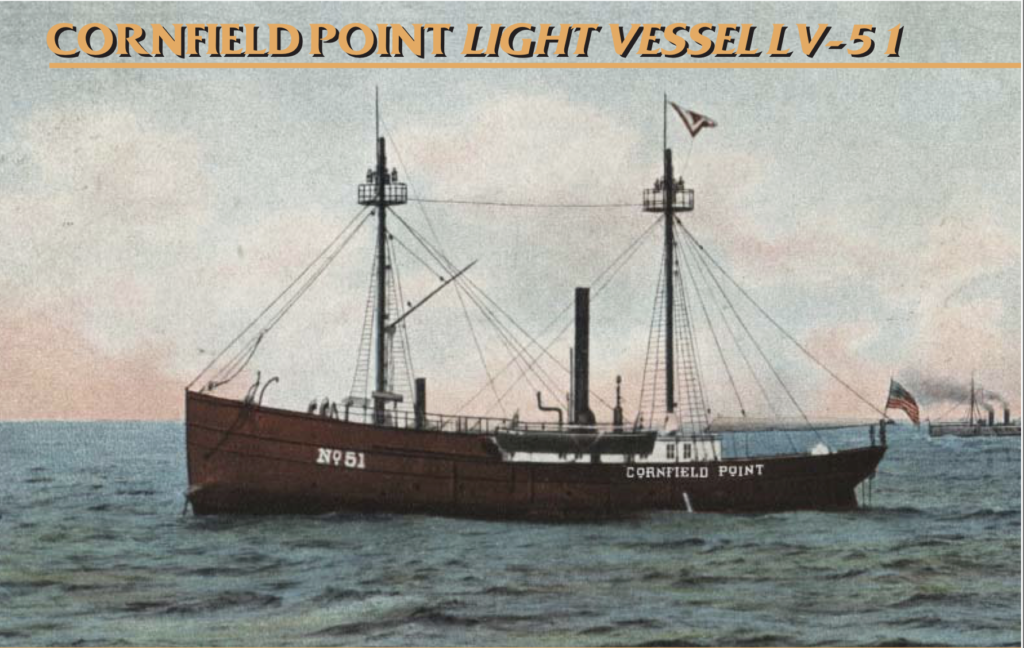 By Nicholas F. Bellantoni and David A. Poirier
By Nicholas F. Bellantoni and David A. Poirier
(c) Connecticut Explored Inc. Spring 2009
Subscribe/Buy the Issue!
When most people think of archaeology, they visualize excavations below ground. However, with Connecticut’s extensive coast and inland rivers and lakes, much of the state’s archaeological heritage lies beneath the water. Shipwrecks, submerged historic villages and Native American camps, airplane crash sites, marine railways, and old wharves, among other diverse maritime sites, form a significant cultural resource for the State of Connecticut. These underwater resources can inform us about our remarkable maritime heritage, giving us insight into early modes of transportation, trade, and national defense.
Three maritime archaeological resources are protected through their designation as State Archaeological Preserves. These include two shipwrecks and a Native American archaeological site.
Actor William Gillette’s yacht Aunt Polly served as his chief residence during construction of his amazing castle, but in 1932 it was destroyed at its berth by a quick-moving fire; approximately 106 feet of the Aunt Polly’s sunken hull is visible at low tide on the Connecticut River shore below the castle.
The Cornfield Point Light Vessel LV-51 was the first United States lightship to be fitted with electric lights and served as floating maritime beacon in Long Island Sound from 1892 to 1919. LV-51 sank in 1919 after being rammed by a barge and rests beneath 170 to 190 feet of water off Old Saybrook.
The LeBeau Fishing Camp and Weir, located on the Quinebaug River in Killingly, contains the earliest and best evidence for Native American fishing associated with weir technology in Connecticut. Established through Connecticut General Statue Section 10-384, State Archaeological Preserves represent a new partnership between the State of Connecticut, local municipalities, concerned citizens, and property owners whose shared goal is the preservation and public interpretation of significant archaeological resources.
Underwater archaeological remains such as shipwrecks and other submerged sites are, however, easily disturbed and damaged. In fact, they are particularly fragile and, once destroyed, lost forever. Unfortunately, modern-day activities such as fishing, trawling, oystering, recreational and commercial diving, dredge disposal, gas pipelines and electric transmission cables, and erosion and other environmental and cultural factors pose significant threats and can cause unintended alterations.
The Office of State Archaeology at the University of Connecticut (Storrs) and the Connecticut Commission on Culture & Tourism’s State Historic Preservation Office strongly believe that the long-term preservation, conservation, and wise management of Connecticut’s maritime archaeological resources can best be accomplished through pro-active partnership with those individuals and organizations who have a vested interest in the waters and resources of Long Island Sound and the major rivers of our state. To promote greater respect and understanding of these sites, our offices provide a forum for different perspectives, information about the legal and technical difficulties associated with shipwreck preservation, and guidance for the care and sustainability of the state’s underwater heritage.
Mystic Seaport Museum, the U.S. Naval Submarine Base in New London, the National Oceanic and Atmospheric Administration, the Department of Environmental Protection’s Office of Long Island Sound Programs and State Parks Division, the University of Connecticut at Avery Point and Storrs, and the state’s recreational diving community are critical players and liaisons for Connecticut’s maritime-related natural and cultural resources. Mutual goals include developing a comprehensive inventory of Connecticut’s underwater cultural resources; creating a unifying management plan to guide the potential investigation, research, and protection of underwater sites; evaluating the eligibility of each site for the state and/or National Register of Historic Places, and assembling an archive of information about maritime-related artifacts, the site reports, historic documentation, and maps that will support a wide variety of research and public education about Connecticut’s unique maritime heritage.
Like terrestrial archaeological sites, underwater sites require extensive historical documentation and archival research and the application of the latest technology in field exploration. Side-scan sonar, proton magnetometer, and other geophysical surveying techniques are sophisticated tools for historic shipwrecks. Submersibles and remote-operated vehicles also facilitate investigation at greater depths. As in all archaeology, the documentation, mapping, and retrieval of artifacts requires attention to details despite many field complications. These professional standards and data requirements are magnified by the difficulties inherent in underwater archaeology, where careful field recording efforts interface with significant health and safety concerns.
The use of increasingly sophisticated technology has enabled amazing underwater research and shipwreck investigations. However, like a double-edged sword, that same technology has permitted unauthorized individuals to locate shipwrecks and remove artifacts for personal gain. Our offices recognize that only a concise management and preservation-oriented approach will save Connecticut’s underwater heritage for future researchers and contribute to a better understanding of our maritime heritage.
Management of Connecticut’s underwater heritage involves many concerned citizens and organizations. It’s important that no voice or perspective is left unheard. The Office of State Archaeology and the State Historic Preservation Office (despite our being life-vested landlubbers) strongly advocate for the preservation of the state’s diverse maritime resources and encourage respectful dialogue among all shipwreck-interested constituencies.
Nicholas F. Bellantoni of Newington is the Connecticut state archaeologist. His current project has him searching for the plane crash of Lt. Eugene Bradley in August 1941.
David A. Poirier of Simsbury is staff archaeologist with the State Historic Preservation Office at the Connecticut Commission on Culture & Tourism
Explore!
Read more stories about Connecticut’s Maritime History and Historic Preservation on our TOPICS pages.
“Site Lines: “Finding Isabel,” Spring 2018
“The State Archaeologist on 30 Years of Great Finds,” Summer 2014
“Site Lines: Preserving What We Can’t See,” Summer 2014
